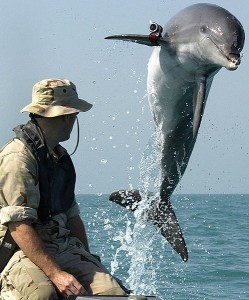 We went a little long with our International Maritime Satire Week – according to my wife I’m apparently I’m “not allowed to blog on our anniversary.” In any case we are returning you to your regularly scheduled, non-satirical NextWar Blog, but first wanted to recap our twitter feed (@CIMSEC) of headlines you might not have seen:
We went a little long with our International Maritime Satire Week – according to my wife I’m apparently I’m “not allowed to blog on our anniversary.” In any case we are returning you to your regularly scheduled, non-satirical NextWar Blog, but first wanted to recap our twitter feed (@CIMSEC) of headlines you might not have seen:
– SECNAV Reintroduces Grog in the US Navy:http://goo.gl/nDGu7
– Autobiography Reveals Alfred T. Mahan Spent Nights Secretly Writing “Twilight” Fan Fiction
– CNO Introduces Equal Opportunity Red Teams: http://goo.gl/hk5SF
– Following Success of Shipboard Breathalyzers, SECNAV Introduces New Parental Chaperone Program
– UAV Weds Topgun Instructor
– Pentagon Announces Sequestration Scenario for Navy: http://goo.gl/BMC1N
– General Atomics Partners with Cyberdyne for New T-800 Drone
– US Joins UNCLOS; Washington Immediately Seized by UN Forces
– US Navy Introduces New LCS Mission Packages: http://goo.gl/Wn8Qs
– Sign-up now for winter Iranian Revolutionary Guard Corps-Navy Photoshop Seminars!
– Xinhua Oped Says Great Barrier Reef a Sacred and Integral Part of China
– Iranian Navy Plans to Alleviate Burden of Global Maritime Responsibilities from US http://goo.gl/nDXKP
– New Somalia National Government Developing a Bailout Package for Failing Piracy Industry
– Admiral’s Staff Completes PowerPoint Magnum Opus – To Be Performed at 1630 Brief.
– Sneak Preview of CNO’s US Navy Birthday Message: “Antarctica Will be Ours!”
– IRGCN Admiral says Iranian Navy Plans to Patrol US Great Salt Lake
– Mothership Tours and Skiff Rides at Somali Piracy Week: http://goo.gl/8RnRm
– North Korea Loses 4 Patrol Boats in Skirmish with South Along Border, Declares “Glorious Unparalleled Victory”
– US Navy to Power Great Blue Fleet with Unobtainium
– Chinese name second aircraft carrier “Panda Express”
– Putin Announces New, Innovative Naval Policy: Build Massive Navy: http://goo.gl/Goh6b
– US Navy CO Fired to Meet Navy Times Quota
– MQ-8B Fire Scout Spends Crew Rest Dominating Friends on X-Box
– Pakistan Says Claims Osama Bin Laden Found in Abottabad “Insultingly Untrue”
– Spain Says Iran Has Secret Vintner Tech, Crossing Red Wine Line; Ahmejinedad Threatens to Close Strait of Gibraltar
– President Deploys US 10th Fleet to Cyberspace: http://goo.gl/zxEzJ
 It’s the time of the month again when CIMSECians get hungry and/or thirsty. For October’s DC meet-up we’ll be returning to the Old Dominion Brewhouse in the Convention Center area, just north of Gallery Place/Chinatown. We hope you’ll join us to discuss the maritime issues of the day, recap our International Maritime Satire Week, nominate topics for our next “week” of analysis, or just meet some interesting people.
It’s the time of the month again when CIMSECians get hungry and/or thirsty. For October’s DC meet-up we’ll be returning to the Old Dominion Brewhouse in the Convention Center area, just north of Gallery Place/Chinatown. We hope you’ll join us to discuss the maritime issues of the day, recap our International Maritime Satire Week, nominate topics for our next “week” of analysis, or just meet some interesting people. 




